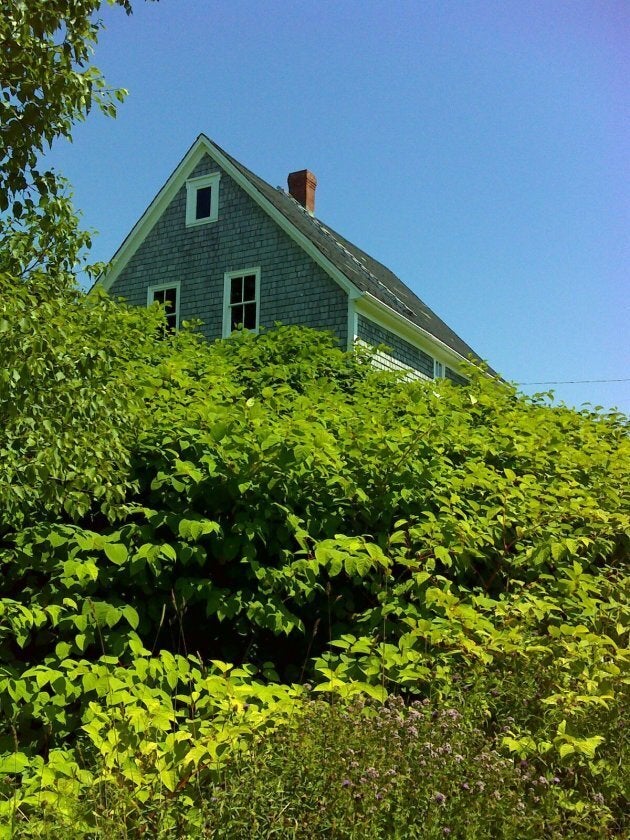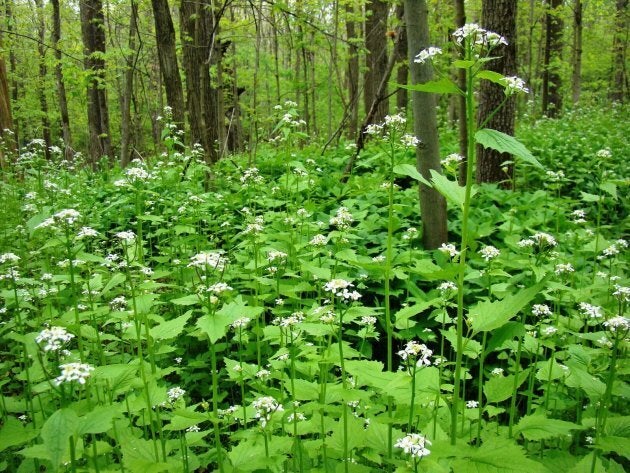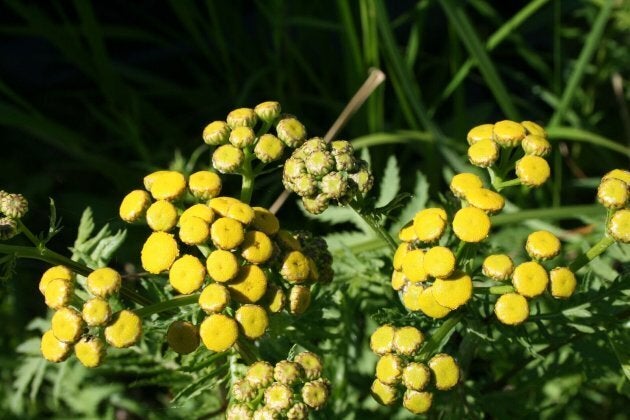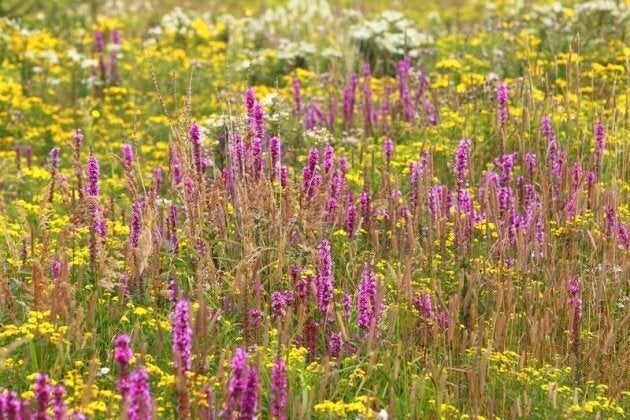Invasive species are a serious threat to Canada's native species and habitats, including in our parks and protected areas. Globally, invasive species are the second most common threat associated with species extinctions (habitat loss is number one), and they are one of the top threats to Canada's species at risk.
Knapweeds
There are five invasive knapweed species in Canada that were unintentionally introduced into Canada from Europe in the late 1800s, probably in alfalfa and clover seeds. All species have slender stems with purple (or sometimes white) flowers and grow from a deep taproot.
Leafy spurge
Leafy spurge was probably introduced to Canada in grain seeds from Europe. It has yellow-greenish flowers, and the leaves and stems have a white milky sap. This species has been documented on NCC properties from Ontario to B.C., and threatens key habitats such as tall grass prairie in Manitoba. On NCC's Big Valley property in Saskatchewan Region, beetles have been introduced as a biological control to contain the spread of the plant.

Canada thistle
Despite its name, this invasive thistle is not from Canada, but has been established in North America for hundreds of years. It has purple flowers and spiny leaves, and grows in open areas. In addition to crowding out native plants, Canada thistle reduces the quality of rangelands. The small seeds are dispersed by winds so it can quickly spread.
European common reed
European common reed has rapidly spread in parts of eastern Canada, in wetlands and along beaches and lake shores. European common reed forms tall, dense thickets that shade out native vegetation. This invasive species is spreading westward, but there is still an opportunity to stop its spread into western Canada. NCC has been managing European common reed on several properties, including a successful control project on Pelee Island, in Ontario.

Japanese knotweed
Japanese knotweed was probably introduced as a garden plant. It can grow up to three metres in height and has nodes on its stems that resemble bamboo. Japanese knotweed is an aggressive invader that can form dense thickets and outcompete native vegetation. It has been identified by the International Union for the Conservation of Nature as one of the world's worst invading species. Japanese knotweed is particularly problematic in Atlantic Canada, where it is taking over the edges of creeks and lakes.

Garlic mustard
Garlic mustard is a forest invader that was first recorded in New York in 1868. It is native to Europe and may have been brought to North America as a food and medicinal plant. Garlic mustard has spread to into forests throughout many parts of eastern North America, and has more recently been found in B.C. and Alberta. This species is one of the few invasive plants that spreads into healthy, intact forests and displaces native species. Each plant produces thousands of tiny black seeds that are viable in the soil for many years. NCC and our Conservation Volunteers are managing garlic mustard on many properties. Garlic mustard leaves can be picked and turned into a tasty pesto!
Buckthorn (glossy false, and European)
These two invasive buckthorns are shrubs that were introduced to North America in late 1800s as ornamentals and were widely planted as windbreaks along farm fields. Both species occur in a wide variety of habitats and form dense thickets that shade out native plants. The plant produces large numbers of seeds in berry-like black fruits that germinate quickly and prevent the regeneration of native trees and shrubs. Common buckthorn is also a primary host of the non-native soybean aphid, which is a serious agricultural pest.

Common tansy
Common tansy is native to Europe and was introduced to North America in the 1600s as a horticultural and medicinal plant. It has yellow, button-like flowers and can grow to 1.5 metres in height. It has been documented from every region in Canada except Nunavut, but is having the greatest impact on stream banks and native grasslands in the prairies and central B.C. In addition to outcompeting native plants, common tansy produces a toxic compound that can impact cattle and wildlife.
European swallow-wort/dog-strangling vine
European swallow-wort is native to eastern Europe and was first recorded near Toronto in 1899. It grows up to two metres long in dense thickets, or by growing on other plants. Monarch butterflies have been known to lay their eggs on this plant, but the larvae do not survive. European swallow-wort invades forests, stream banks, grasslands and globally rare alvar habitats. A moth from the Ukraine that can only survive on European swallow-wort has been approved for release in North America to act as a bio-control for this invasive plant.

Purple loosestrife
Identified by the International Union for the Conservation of Nature as one of the world's worst invading species, a single purple loosestrife plant can produce over 2 million seeds each year! This species was introduced to North America from Europe in the 1800s for ornamental and medicinal purposes. In fact, it is still sold as an ornamental plant in some places. Purple loosestrife crowds out most native vegetation and can create near-monocultures. From 1992 to 1994, two beetles and two weevils from Europe were released as a biological control and seem to be reducing the numbers of this plant.
How can you help?
We all have an important role to play in preventing the introduction and spread of invasive species. Many invasive plants, such as purple loosestrife and Japanese knotweed, started out in our gardens. We can all play a role in auditing our properties to ensure we aren't growing plants that have a track record of escaping and invading natural habitats.
We still have a long way to go in effectively managing invasive plants in Canada, but we all have role. By being able to identify these species, controlling them on our properties and reporting them as they spread into new areas, we can help to protect our Canadian species and habitats.
The Nature Conservancy of Canada (NCC) is managing invasive species on many of our properties across Canada.
Follow HuffPost Canada Blogs on Facebook
Also on HuffPost: